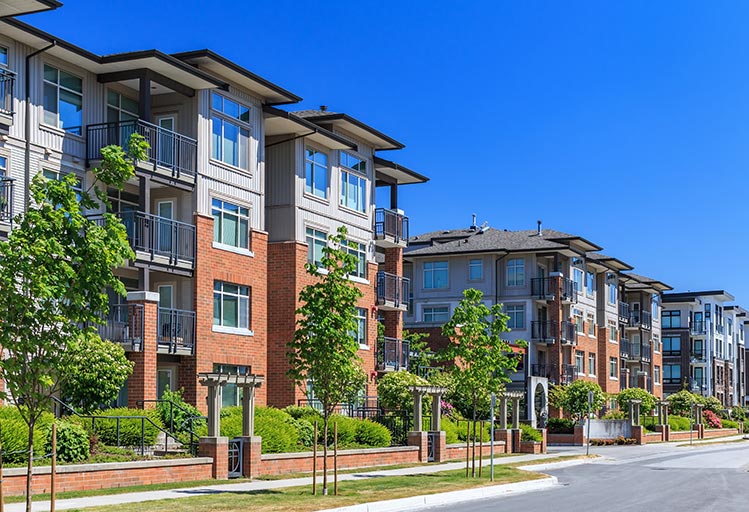
Section 1250 has two components — property and depreciation. It uses a depreciation recapture rule that applies to certain property types held for more than one year. Properties that use the straight-line depreciation method do not fall under section 1250. For properties that take depreciation greater than the straight-line method, the rule applies, and depreciation must be recaptured upon the property's sale.
To understand how section 1250 works, we must understand the two depreciation methods that are being used. These are the straight-line method and the modified accelerated cost recovery system (MACRS).
Straight-Line Depreciation
The straight-line depreciation method spreads depreciation evenly across the life of the property. The formula for this method is:
(cost of the asset - salvage value) / (useful life in years)
As an example, if a property costs $1 million, has a salvage value of $200,000, and a useful life of 40 years, depreciation of (($1 million - $200,000) / 40) = $20,000 can be taken each year for 40 years.
There are limits to the straight-line method. Residential properties can be deducted up to 27.5 years. Commercial properties can be deducted up to 39 years if placed into service after 5/12/1993.
MACRS
MACRS stands for modified accelerated cost recovery system. It deducts depreciation faster than the straight-line method. Using MACRS, more depreciation is taken in the earlier years than in the later years. Assets are also categorized with set depreciation periods. MACRS basically provides a tax deferral. By taking more depreciation earlier on, firms can get their cash back quicker and reinvest it. Note that using this method does not subtract out the salvage value.
When calculating depreciation using MACRS, depreciation starts in the middle of the first year and ends in the middle of the last year. This might make it seem as though an extra year is being added, but that is only because calendar years are not being followed.
MACRS accelerated depreciation uses cost segregation, which allows for taking depreciation on specific components of a building. For example, if a commercial building will not last the full 39 years, the investor can elect to use cost segregation. What we mean by not lasting the full 39 years is replacing the carpet, paint, light fixtures, electrical lines, A/C units, and more.
From Investopedia, we can see a break down of assets, along with depreciable life-spans in years:
- Tractors, racehorses, rent-to-own property, etc. — 3 years
- Automobiles, buses, trucks, computers, office machinery, breeding cattle, furniture, etc. — 5 years
- Office furniture, fixtures, agricultural machinery, railroad track, etc. — 7 years
- Vessels, tugs, agricultural structure, tree or vine bearing fruits or nuts, etc. — 10 years
- Municipal wastewater treatment plant, restaurant property, natural gas distribution line, land improvements, such as shrubbery, fences, and sidewalks, etc. — 15 years
- Farm buildings, certain municipal sewers, etc. — 20 years
- Water utility property, certain municipal sewers, etc. — 25 years
- Any building or structure where 80% or more of its gross rental income is from dwelling units — 27.5 years
- An office building, store, or warehouse that is not residential property or has a class life of fewer than 27.5 years — 39 years
Bonus Depreciation
Bonus depreciation allows the investor to write off the useful life of assets in year one. This is also called additional first-year depreciation deduction. Bonus depreciation applies only to assets acquired after September 27, 2017.
The Bonus Depreciation rate is 100% of a company’s tax rate. For example, if a company acquires a $100,000 (cost basis) asset and has a tax rate of 21%, then the depreciation amount will be $21,000.
Unrecaptured Section 1250 Gain
Because depreciation can be taken with Section 1250 properties, an unrecaptured gain can occur when depreciation is taken above what is allowed using the straight-line method. The unrecaptured gain has a maximum rate of 25% but can be lower. Gains that aren’t part of accumulated depreciation are taxed at the long-term capital gains rate of 15%.
Unrecaptured depreciation applies only to real property, which is land and buildings. Personal property such as equipment and machinery does not apply and is subject to ordinary depreciation recapture rates under Section 1245.
As an example of how an unrecaptured section 1250 gain works, let’s say an investor acquires a property for $200,000. They have depreciation of $40,000. Their adjusted cost basis is $160,000. The property is sold for $250,000, producing a gain of $90,000 above the adjusted cost basis. The property has sold above the adjusted cost basis. The difference between the adjusted cost basis and the original price is the unrecaptured section 1250 gains, or ($200,000 - $160,000), $40,000 in this case.
The $40,000 is subject to unrecaptured gains at a rate of 25%. The remaining $50,000 of gains is taxed at the long-term capital gains rate of 15%.
Deferring Gains With A 1031 Exchange
The above scenarios all produce gains due to depreciation. However, if there was a loss, it would offset any gains. But in the case of taxable gains, investors can defer them by using a 1031 exchange. This assumes all 1031 exchange rules for like-kind property have been met.
Section 1250 property is real property that can be depreciated. Depending on how depreciation was taken, taxable gains at various rates may be produced. By working with your financial team, you can defer those gains through a 1031 exchange.



